#NOAA Fisheries
Explore tagged Tumblr posts
Text

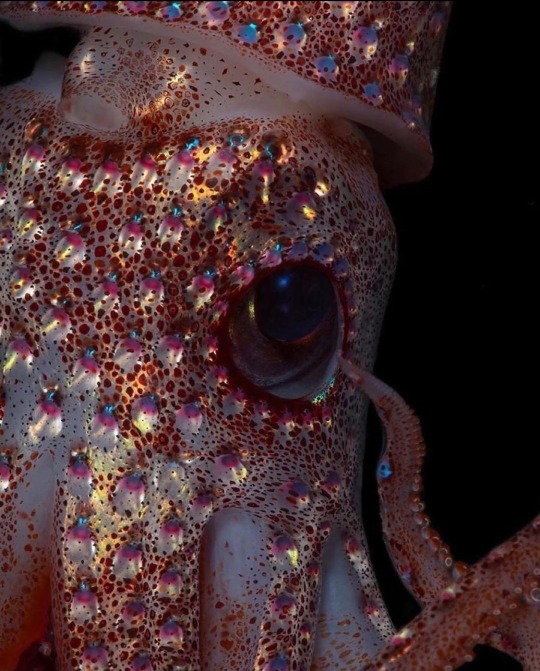

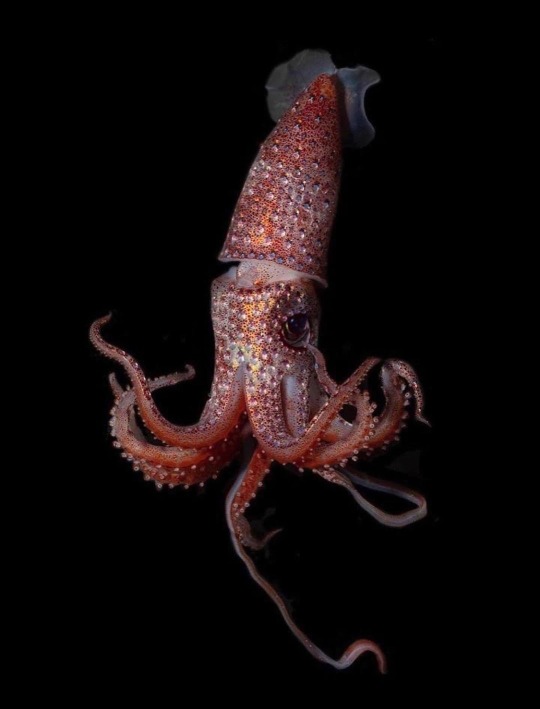
Wake up babe new fish dropped
#threads#deep sea creatures#strawberry squid#marine biology#deep see research cruise#noaa#noaa fisheries
89K notes
·
View notes
Text

Excerpt from this press release from the Center for Biological Diversity:
The Center for Biological Diversity and 20 partner organizations petitioned NOAA Fisheries today to protect diamondback terrapins as endangered under the Endangered Species Act. Aquatic turtles who live primarily in coastal marshes and estuaries from Massachusetts to Texas, these animals have declined by 75% across most of their range in the past 50 years.
“Tens of thousands of terrapins are drowning in crab traps each year. Without the lifeline of Endangered Species Act protection, they’ll sink into extinction,” said Will Harlan, a senior scientist at the Center for Biological Diversity.
In many locations along the Atlantic and Gulf coasts, terrapin populations have been wiped out completely.
Drowning in crab traps is a leading cause of death. These traps are submerged cages with funneled entrances that catch both crabs and air-breathing terrapins. Around 3 million crab traps are deployed each year by recreational and commercial crabbers, which kill tens of thousands of diamondback terrapins annually.
In addition, between 25% and 50% of all crab traps are lost or abandoned annually in coastal waters. These derelict cages — called ghost traps — kill tens of thousands more terrapins every year. Researchers estimate 60,000 to 80,000 terrapins are killed in active and abandoned crab traps each year.
Yet simple, proven solutions exist that could save terrapins. Bycatch reduction devices installed on crab traps have no negative effects on crab harvests, but they reduce diamondback terrapin deaths by 94%.
Terrapins are also threatened by habitat loss from sea-level rise and development. They’ve already lost half of their original wetlands and are expected to lose up to 60% of their coastal marsh habitat by the end of the century.
As these animals travel farther in search of habitat, thousands of egg-bearing females are killed along roads each year. Increasing pollution, poaching, predators, boat strikes and climate change also threaten them.
12 notes
·
View notes
Text
Been worried all week how current events might affect our colleagues at Southwest Fisheries Science Center, although I'm not really close to anyone there any more (my former supervisor who retired from us and then started working for them retired a couple of years ago).
I texted the person I've interacted with the most recently - she got me finally checked off for aging sardine otoliths - and said "r u all doing OK down there?" I didn't want to pry or maybe get her in trouble - that's her work phone for all I know.
She replied with "We're hanging in there - thanks for asking."
I sent back 👍🏽...🐟💪.
I don't know her standing or her leanings...I know the Feds are not a monolith and many may even be in favor of this. But just wanted to express support for people in an agency that does good work and is about to face some hard times, somehow.
Wish I could do more than phoning reps.
2 notes
·
View notes
Text
Look at my son


🥹
35K notes
·
View notes
Text
"In this week’s podcast, we hear from Ryan Vandermeulen, NOAA Fisheries satellite remote sensing coordinator. He’s passionate about satellites and making satellite data more accessible to the average citizen. Listen to him talk about what’s in store for the next generation of satellite technology, and hear the music he created based on satellite images of phytoplankton blooms." - NOAA Fisheries
0 notes
Text
ugh i want this internship so bad why cant they just receive my telepathic messaging and hire me without me having to apply. the want is immeasurable but doesnt easily translate into a "cover letter"
37 notes
·
View notes
Text
"For years, California was slated to undertake the world’s largest dam removal project in order to free the Klamath River to flow as it had done for thousands of years.
Now, as the project nears completion, imagery is percolating out of Klamath showing the waterway’s dramatic transformation, and they are breathtaking to behold.
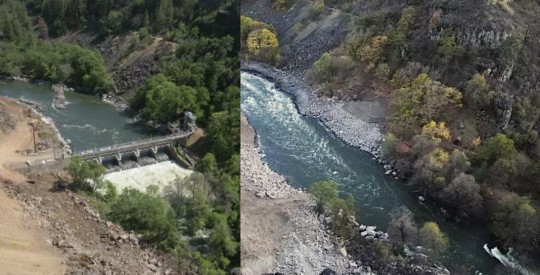
Pictured: Klamath River flows freely, after Copco-2 dam was removed in California.
Incredibly, the project has been nearly completed on schedule and under budget, and recently concluded with the removal of two dams, Iron Gate and Copco 1. Small “cofferdams” which helped divert water for the main dams’ construction, still need to be removed.
The river, along which salmon and trout had migrated and bred for centuries, can flow freely between Lake Ewauna in Klamath Falls, Oregon, to the Pacific Ocean for the first time since the dams were constructed between 1903 and 1962.
“This is a monumental achievement—not just for the Klamath River but for our entire state, nation, and planet,” Governor Gavin Newsom said in a statement. “By taking down these outdated dams, we are giving salmon and other species a chance to thrive once again, while also restoring an essential lifeline for tribal communities who have long depended on the health of the river.”
“We had a really incredible moment to share with tribes as we watched the final cofferdams be broken,” Ren Brownell, Klamath River Renewal Corp. public information officer, told SFGATE. “So we’ve officially returned the river to its historic channel at all the dam sites. But the work continues.”

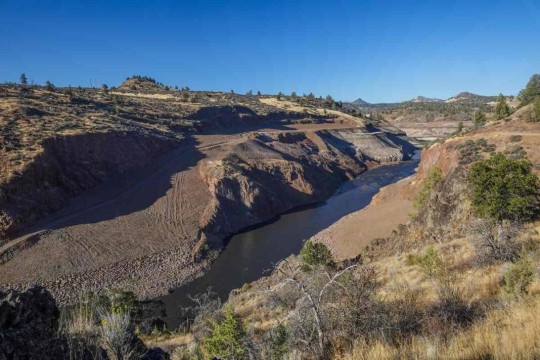
Pictured: Iron Gate Dam, before and after.
“The dams that have divided the basin are now gone and the river is free,” Frankie Myers, vice chairman of the Yurok Tribe, said in a tribal news release from late August. “Our sacred duty to our children, our ancestors, and for ourselves, is to take care of the river, and today’s events represent a fulfillment of that obligation.”
The Yurok Tribe has lived along the Klamath River forever, and it was they who led the decades-long campaign to dismantle the dams.
At first the water was turbid, brown, murky, and filled with dead algae—discharges from riverside sediment deposits and reservoir drainage. However, Brownell said the water quality will improve over a short time span as the river normalizes.
“I think in September, we may have some Chinook salmon and steelhead moseying upstream and checking things out for the first time in over 60 years,” said Bob Pagliuco, a marine habitat resource specialist at the National Oceanic and Atmospheric Administration in July.


Pictured: JC Boyle Dam, before and after.
“Based on what I’ve seen and what I know these fish can do, I think they will start occupying these habitats immediately. There won’t be any great numbers at first, but within several generations—10 to 15 years—new populations will be established.”
Ironically, a news release from the NOAA states that the simplification of the Klamath River by way of the dams actually made it harder for salmon and steelhead to survive and adapt to climate change.
“When you simplify the habitat as we did with the dams, salmon can’t express the full range of their life-history diversity,” said NOAA Research Fisheries Biologist Tommy Williams.
“The Klamath watershed is very prone to disturbance. The environment throughout the historical range of Pacific salmon and steelhead is very dynamic. We have fires, floods, earthquakes, you name it. These fish not only deal with it well, it’s required for their survival by allowing the expression of the full range of their diversity. It challenges them. Through this, they develop this capacity to deal with environmental changes.”
-via Good News Network, October 9, 2024
#california#oregon#klamath river#dam#dam removal#yurok#first nations#indigenous activism#rivers#wildlife#biodiversity#salmon#rewilding#nature photography#ecosystems#good news#hope
6K notes
·
View notes
Text

A NOAA flyer with tips for salmon-friendly gardening. Recommendations include amending soil with mulch and compost, planting native plants, water conservation, and limiting use of pesticides or herbicides.
"No matter the size of your greenspace, you can adopt salmon-friendly West Coast Region gardening practices."
Citation:
Seeds for Salmon : Gardening to Improve Salmon Habitat. U.S. Department of Commerce, National Oceanic and Atmospheric Administration, NOAA Fisheries, West Coast Region, 2023.
Available on HathiTrust.
#govpubs#2020s#2023#salmon#soil#gardening#nativeplants#environment#fisheries#NOAA#NOAAfisheries#AvaHays
0 notes
Text
Bluefin Tuna Index.
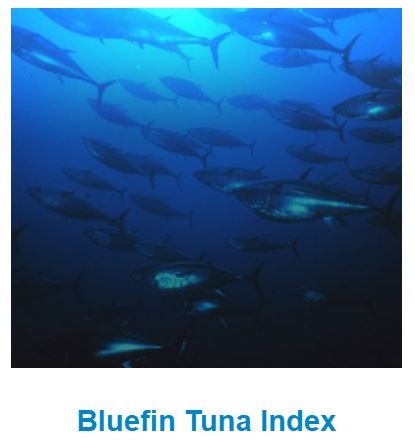
The Bluefin Tuna Index provides detailed information about bluefin tuna habitat to management bodies to inform decision making. The index tracks favorable habitat for the bluefin tuna in near-real time and is used by NOAA Fisheries in stock assessments. With better-informed catch limits and location information, commercial fishing operations are able to harvest their catch both successfully and sustainably.
Learn more Bluefin Tuna Index
#yellowfin tuna#tunafish#bigeye tuna#albacore tuna#bluefin tuna#tuna fishing vessels#managing tuna fisheries#NOAA
0 notes
Text
PLEASE look at the way images on the NOAA fisheries website fade in when loaded

he's like a memory......
5K notes
·
View notes
Text

DEEP SEA PRODUCE ITS OWN "DARK OXYGEN"
Small metallic nodules, like potato-size strewn across the deep sea ocean seafloor produce oxygen in complete darkness and without any help from living organisms, a new research reveals.
Called polymetallic nodules, are found in the deep sea and produce oxygen through seawater electrolysis, where seawater splits into oxygen and hydrogen in the presence of an electric charge. This charge may come from the difference in electric potential that exists between metal ions within the nodules, which leads to a redistribution of electrons. This is called by scientists as dark oxygen, as is produced without sunlight, as photosintesys does.

-Polymetallic nodules coat fields of the ocean floor Photo: NOAA Office of Ocean Exploration and Research
These nodules polymetallic nodules are common between 3,000 to 6,000 m below the ocean surface. These nodules mostly contain oxides of iron and manganese , but also metals like cobalt, nickel and lithium, as well as rare earth elements such as cerium that are essential components of electronics and low-carbon technologies. This also raise new concerns about potentially mining polymetallic nodules, which could represent a vital source of oxygen for deep-sea ecosystems.
Main photo by Fisheries and Oceans Canada
Reference (Open Access): Sweetman et al., 2024. Evidence of dark oxygen production at the abyssal seafloor. Nat. Geosci.
#deep sea#science#geology#marine science#abyssal#pacific#biology#marine biology#oceanography#dark oxygen
1K notes
·
View notes
Text

Opah or Moonfish (Lampris guttatus), family Lampridae, order Lampriformes, found in oceans around the world
This fish is capable of whole body endothermy (warm-bloodedness).
This is the only fish that is known to be capable of this. Some other fishes, like tunas and some sharks, are capable of "regional endothermy".
photograph by Ralph Pace (NOAA Fisheries)
699 notes
·
View notes
Text
Things the Biden-Harris Administration Did This Week #28
July 19-26 2024
The EPA announced the award of $4.3 billion in Climate Pollution Reduction Grants. The grants support community-driven solutions to fight climate change, and accelerate America’s clean energy transition. The grants will go to 25 projects across 30 states, and one tribal community. When combined the projects will reduce greenhouse gas pollution by as much as 971 million metric tons of CO2, roughly the output of 5 million American homes over 25 years. Major projects include $396 million for Pennsylvania’s Department of Environmental Protection as it tries to curb greenhouse gas emissions from industrial production, and $500 million for transportation and freight decarbonization at the ports of Los Angeles and Long Beach.
The Biden-Harris Administration announced a plan to phase out the federal government's use of single use plastics. The plan calls for the federal government to stop using single use plastics in food service operations, events, and packaging by 2027, and from all federal operations by 2035. The US government is the single largest employer in the country and the world’s largest purchaser of goods and services. Its move away from plastics will redefine the global market.
The White House hosted a summit on super pollutants with the goals of better measuring them and dramatically reducing them. Roughly half of today's climate change is caused by so called super pollutants, methane, hydrofluorocarbons (HFCs), and nitrous oxide (N2O). Public-private partnerships between NOAA and United Airlines, The State Department and NASA, and the non-profit Carbon Mapper Coalition will all help collect important data on these pollutants. While private firms announced with the White House plans that by early next year will reduce overall U.S. industrial emissions of nitrous oxide by over 50% from 2020 numbers. The summit also highlighted the EPA's new rule to reduce methane from oil and gas by 80%.
The EPA announced $325 million in grants for climate justice. The Community Change Grants Program, powered by President Biden's Inflation Reduction Act will ultimately bring $2 billion dollars to disadvantaged communities and help them combat climate change. Some of the projects funded in this first round of grant were: $20 million for Midwest Tribal Energy Resources Association, which will help weatherize and energy efficiency upgrade homes for 35 tribes in Michigan, Minnesota, and Wisconsin, $14 million to install onsite wastewater treatment systems throughout 17 Black Belt counties in Alabama, and $14 million to urban forestry, expanding tree canopy in Philadelphia and Pittsburgh.
The Department of Interior approved 3 new solar projects on public land. The 3 projects, two in Nevada and one in Arizona, once finished could generate enough to power 2 million homes. This comes on top of DoI already having beaten its goal of 25 gigawatts of clean energy projects by the end of 2025, in April 2024. This is all part of President Biden’s goal of creating a carbon pollution-free power sector by 2035.
Treasury Secretary Janet Yellen pledged $667 million to global Pandemic Fund. The fund set up in 2022 seeks to support Pandemic prevention, and readiness in low income nations who can't do it on their own. At the G20 meeting Yellen pushed other nations of the 20 largest economies to double their pledges to the $2 billion dollar fund. Yellen highlighted the importance of the fund by saying "President Biden and I believe that a fully-resourced Pandemic Fund will enable us to better prevent, prepare for, and respond to pandemics – protecting Americans and people around the world from the devastating human and economic costs of infectious disease threats,"
The Departments of the Interior and Commerce today announced a $240 million investment in tribal fisheries in the Pacific Northwest. This is in line with an Executive Order President Biden signed in 2023 during the White House Tribal Nations Summit to mpower Tribal sovereignty and self-determination. An initial $54 million for hatchery maintenance and modernization will be made available for 27 tribes in Alaska, Washington, Oregon, and Idaho. The rest will be invested in longer term fishery projects in the coming years.
The IRS announced that thanks to funding from President Biden's Inflation Reduction Act, it'll be able to digitize much of its operations. This means tax payers will be able to retrieve all their tax related information from one source, including Wage & Income, Account, Record of Account, and Return transcripts, using on-line Individual Online Account.
The IRS also announced that New Jersey will be joining the direct file program in 2025. The direct file program ran as a pilot in 12 states in 2024, allowing tax-payers in those states to file simple tax returns using a free online filing tool directly with the IRS. In 2024 140,000 Americans were able to file this way, they collectively saved $5.6 million in tax preparation fees, claiming $90 million in returns. The average American spends $270 and 13 hours filing their taxes. More than a million people in New Jersey alone will qualify for direct file next year. Oregon opted to join last month. Republicans in Congress lead by Congressmen Adrian Smith of Nebraska and Chuck Edwards of North Carolina have put forward legislation to do away with direct file.
Bonus: American law enforcement arrested co-founder of the Sinaloa Cartel, Ismael "El Mayo" Zambada. El Mayo co-founded the cartel in the 1980s along side Joaquín "El Chapo" Guzmán. Since El Chapo's incarceration in the United States in 2019, El Mayo has been sole head of the Sinaloa Cartel. Authorities also arrested El Chapo's son, Joaquin Guzman Lopez. The Sinaloa Cartel has been a major player in the cross border drug trade, and has often used extreme violence to further their aims.
#Joe Biden#Thanks Biden#kamala harris#us politics#american politics#politics#climate change#climate crisis#climate action#tribal rights#IRS#taxes#tax reform#El Chapo
771 notes
·
View notes
Note
I was wondering, what is your favorite species of seal/sea lion?
Well, walruses are certainly up there, and crabeater seals, and baikal seals, but if I had to choose one...

Ribbon Seal (Histriophoca fasciata), family Phocidae, Bering Land Bridge National Preserve, Alaska
photograph by Josh London

photo: NOAA

photo: Michal Cameron

photo: D. WITHROW/NOAA FISHERIES/AFSC
368 notes
·
View notes
Text



The Very Nice Rice's Whale
Rice's whale, also known as the Gulf of Mexico whale (Balaenoptera ricei) is a species of whale found only in the Gulf of Mexico. Originally the species was thought to be restricted to the northeastern part of the gulf, but it is now known to travel throughout the area. They keep close to the coast, and are rarely seen in waters deeper than 400 m (1300 ft). Originally, Rice's whale was considered a subspecies of Bryde's whale (B. edeni), but in 2021 genetic testing revealed it to be a completely separate species.
Gulf of Mexico whales are moderately sized; females grow to 12.65 meters (41.5 ft) in length and 13.87 metric tons (15.28 US tons), while males are slightly smaller at 11.26 meters (36.9 ft) long. Adults are plain grey and three long ridges on the top of their heads, which makes up a full quarter of their body length. The throat pouches and the underside of the tail are pink.
B. ricei follows a diel vertical diving pattern; they spend the day foraging near the bottom of the ocean, and rise to the surface at night. Though little is known about the diet of Rice's whales, it is suspected that they feed on lanternfish, hatchetfish, and silver-rag driftfish, which are abundant at great depths. Because they are baleen whales, they likely ingest large quantities of water and then filter their catch through their baleen plates.
The breeding habits of Gulf of Mexico have not been studied, but scientists extrapolating from information on the closely related Bryde's whale believe that B. ricei reproduce once every two or three years. Pregnancies may last 10-12 months, and subsequent nursing may last for up to 2 years. Scientists also estimate that Rice's whale reaches sexual maturity at 9 years old, and can breed year-round due to the warm, food-rich waters in which they live. Adults are often seen in small groups of 2-4.
Conservation status: The Gulf of Mexico whale is considered Critically Endangered by the IUCN. Less than 100 individuals exist in the wild; most scientists estimate the population to be no greater than 33. Their primary threats are boat strikes and the hazards included in drilling for oil, including underwater noise and oil spills.
Photos
National Marine Fisheries Service
NOAA Fishieries
#rice's whale#gulf of mexico whale#Artiodactyla#Balaenopteridae#baleen whales#rorquals#whales#cetaceans#even toed ungulates#ungulates#mammals#marine fauna#marine mammals#open ocean#open ocean mammals#pelagic fauna#pelagic mammals#atlantic ocean#gulf of mexico#animal facts#biology#zoology#ecology
102 notes
·
View notes
Text
EarthWeek with @NOAAFisheries: "What happened to all the Alaska snow crabs?
In 2022, the Bering Sea snow crab season had to be cancelled after a mysterious collapse in snow crab populations. Hear how @NOAAFisheriesAK cracked this historic case in our latest podcast episode"
#NOAA Fisheries#NOAA Fisheries Alaska#Alaskan Snow Crabs#Bering Sea Snow Crab Season#Snow Crab Disappearance#snow crab population collapse#Earth Week#NOAA Dive In podcast#Climate Change#Climate Crisis#NOAA Podcast
1 note
·
View note